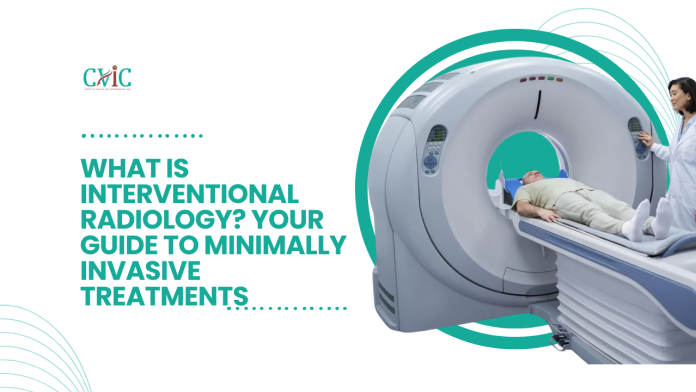What is Interventional Radiology? Your Guide to Minimally Invasive Treatments
Interventional Radiology (IR) is a transformative medical specialty that utilizes image-guided techniques to perform minimally invasive procedures. Often considered the bridge between diagnostic imaging and surgical treatment, IR is rapidly gaining recognition for its precision, safety, and quicker recovery times. In this comprehensive guide, we will explore what interventional radiology is, the conditions it treats, its advantages, and why it might be the right option for you.
Understanding Interventional Radiology
At its core, Interventional Radiology involves the use of imaging technologies such as X-rays, ultrasound, CT scans, and MRIs to guide small instruments like catheters or needles through the body to treat a wide array of conditions. These procedures are performed through small incisions, often the size of a pinhole, offering an alternative to traditional open or laparoscopic surgery.
IR is practiced by trained medical professionals known as interventional radiologists. These specialists combine diagnostic imaging expertise with clinical and procedural skills to treat various conditions, often on an outpatient basis.
Key Imaging Techniques Used in IR
- Fluoroscopy: A real-time form of X-ray imaging, often used to guide catheters.
- Ultrasound: High-frequency sound waves help visualize internal organs and structures.
- Computed Tomography (CT): Offers cross-sectional images for precise targeting.
- Magnetic Resonance Imaging (MRI): Used for soft tissue imaging and some specialized interventions.
Conditions Commonly Treated with Interventional Radiology
1. Neuro Interventions
- Cerebral angiogram
- Stroke treatment (Mechanical Thrombectomy)
- Aneurysm coiling
- AVM embolization
2. Vascular Surgery/Interventions
- Peripheral artery disease (PAD)
- Varicose veins treatment
- Deep vein thrombosis (DVT)
- Dialysis fistula maintenance
3. MSK & Ortho Interventions
- Vertebroplasty and kyphoplasty for spinal fractures
- Joint injections and aspirations
- Tendon sheath injections
- Chronic pain management
4. Gastrointestinal Interventions
- Gastrostomy tube placement
- Biliary drainage and stenting
- Treatment for gastrointestinal bleeding
- Liver tumor ablation (RFA/MWA)
5. Oncology Interventions
- Chemoembolization
- Radioembolization
- Tumor ablation
- Biopsies and drain placements
6. Uro/Nephro Interventions
- Nephrostomy tube placement
- Ureteral stenting
- Prostatic artery embolization (PAE)
- Kidney tumor ablation
7. Gynecology Interventions
- Uterine Fibroid Embolization (UFE)
- Fallopian tube recanalization
- Pelvic congestion syndrome treatment
Benefits of Interventional Radiology Over Traditional Surgery
- Minimally Invasive: Small incisions mean less trauma to the body.
- Faster Recovery: Most patients return to normal activities within a few days.
- Less Pain: Reduced tissue damage results in less post-operative pain.
- Lower Risk of Infection: The minimally invasive nature minimizes exposure.
- Cost-Effective: Shorter hospital stays and fewer complications reduce overall costs.
- Outpatient Procedures: Many treatments do not require overnight hospitalization.
Who Can Benefit from Interventional Radiology?
- Patients with chronic conditions such as fibroids or varicose veins
- Individuals who are not suitable candidates for open surgery
- Those looking for faster recovery and minimal hospital stays
- People with cancer requiring targeted tumor treatment
How to Prepare for an Interventional Radiology Procedure
Before undergoing an IR procedure, your interventional radiologist will conduct:
- A complete medical history and physical examination
- Review of diagnostic imaging (CT, MRI, X-ray)
- Blood tests and allergy assessments
- Patient education on the procedure, risks, and aftercare
On the day of the procedure:
- Fasting may be required
- Sedation or local anesthesia will be administered
- Post-procedure observation for a few hours is typical
What to Expect During and After the Procedure
During:
- The procedure is performed under image guidance
- Small tools are inserted through catheters into the target area
- Real-time imaging ensures accuracy and safety
After:
- You may feel mild soreness or fatigue
- Recovery is generally quick, with most patients resuming normal activities in a few days
- Follow-up imaging may be scheduled
Interventional Radiology in Indore
If you’re searching for interventional radiology services in Indore, our clinic offers advanced, patient-centered care. With a highly trained team, state-of-the-art equipment, and a commitment to minimally invasive excellence, we help you avoid traditional surgery whenever possible.
Schedule your consultation today and explore safe, modern alternatives to surgery.
Frequently Asked Questions (FAQs)
Q: Is interventional radiology safe?
A: Yes, IR procedures are generally safe and carry fewer risks than open surgery.
Q: Will I feel pain during the procedure?
A: Most procedures involve minimal discomfort and are done under local anesthesia or light sedation.
Q: How long is the recovery period?
A: Recovery time varies by procedure, but most patients return to normal activities within a week.
Q: Are IR procedures covered by insurance?
A: Many IR procedures are covered, but you should verify with your insurance provider.
Q: How do I know if IR is right for me?
A: Schedule a consultation with an interventional radiologist to assess your condition and treatment options.
Interventional Radiology is changing the face of modern medicine. Whether you’re suffering from chronic pain, vascular issues, or cancer, IR offers hope without the scalpel. Choose a safer, faster, and more precise path to healing.




